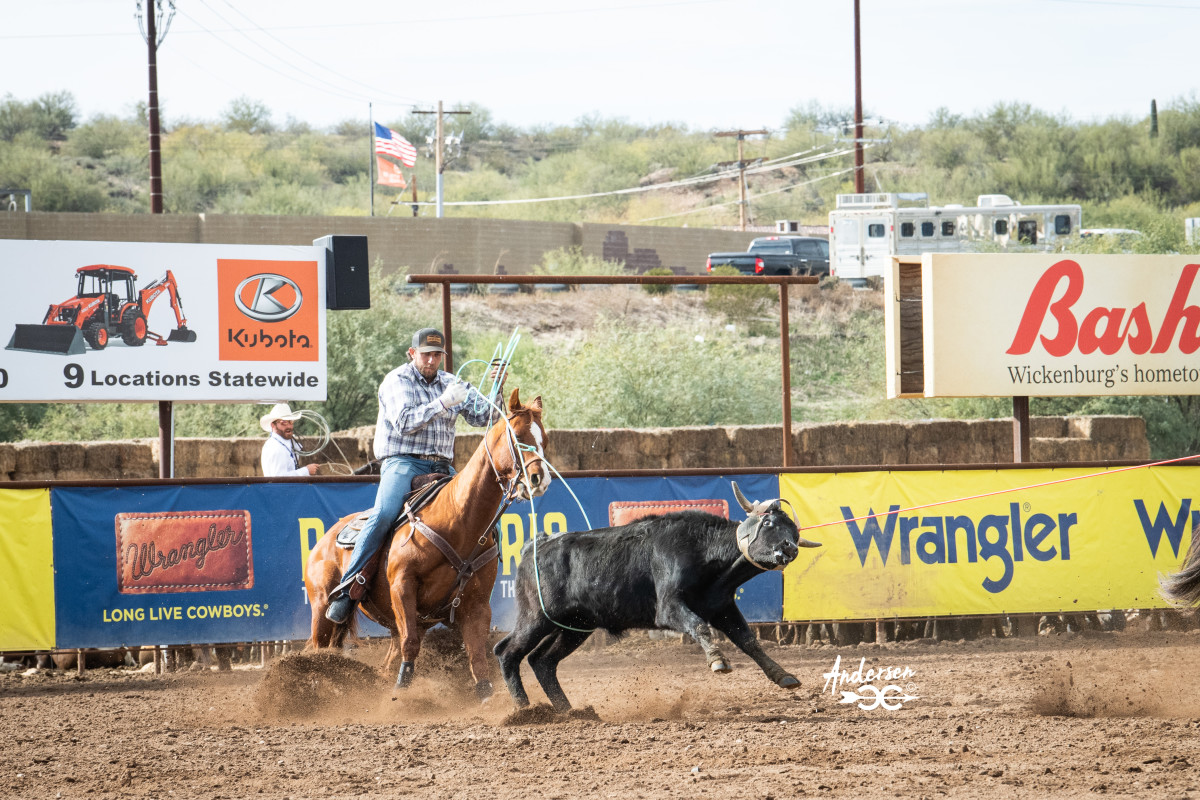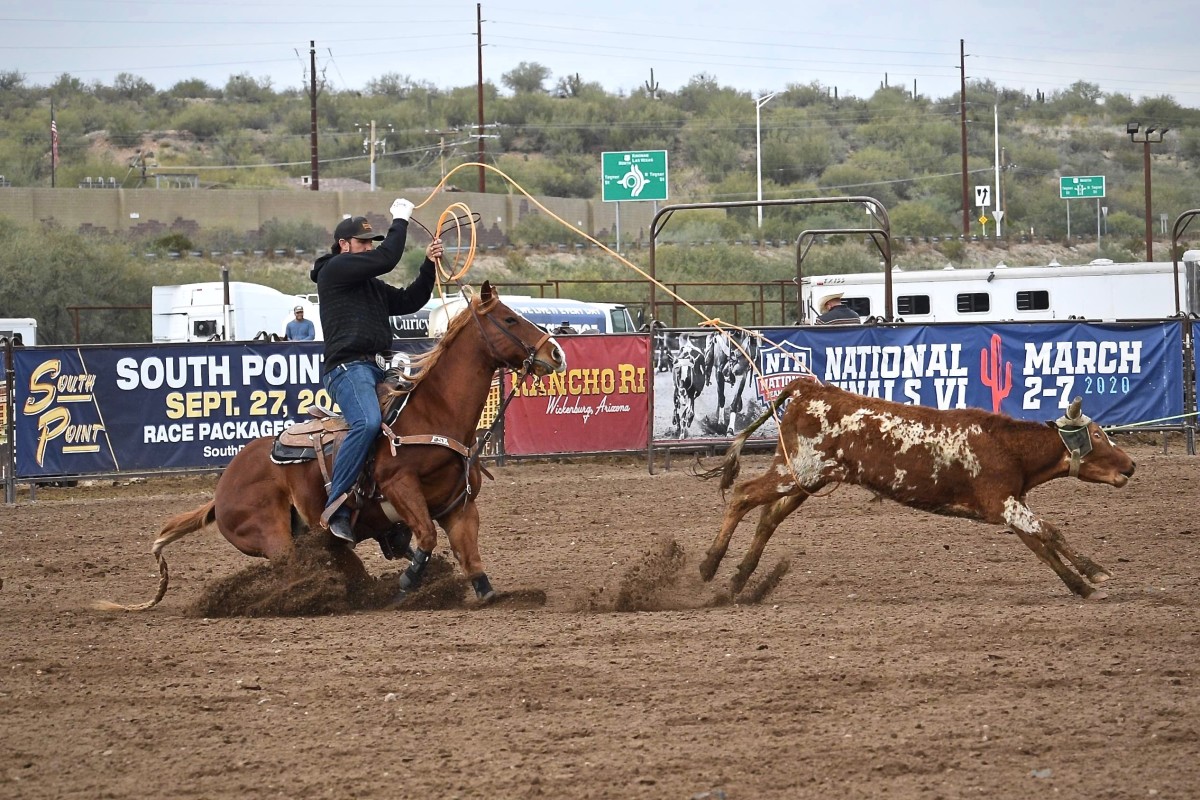Dear Sports Media,
First, let us say this: Thank you for taking notice of the sport of team roping. We’re glad you’re here, even if you got into this game by outing our beloved Madison Bumgarner—a.k.a. MadBum—and his alias, Mason Saunders.
I wish I’d have written this note for you all before you started writing about our sport, though. I wish I’d have posted a Team Roping 101 that was so finely SEOed that you couldn’t help but come across it as you began your research for your stories. Truth be told, I didn’t read the full copy in The Athletic (I just write about team roping, so my budget isn’t really robust enough to pay for that content… but props to you all for making that work.), but I’m pretty sure I read every other story I could find yesterday, and I’d like to give you a hand with your verbiage as you dive into this new arena.
First, Madison Bumgarner doesn’t really participate in rodeos.
Madison Bumgarner—a.k.a. Mason Saunders—is, generally speaking, a recreational team roper. That means he mostly participates in team roping jackpots. They’re really, really different from rodeos. Rodeos—usually sanctioned by the Professional Rodeo Cowboys Association and Women’s Professional Rodeo Association or another smaller group—consist of bareback riding, steer wrestling, (sometimes breakaway roping, too,) team roping, saddle bronc riding, tie-down roping, barrel racing and bull riding. Rodeos are a show and a competition, usually on behalf of the fans.
Team roping jackpots, however, are more like cowboy golf. A team roping jackpot is just team roping, with multiple divisions based on skill level. There aren’t usually many fans there to watch, and there’s always money up for grabs, paid into the pot by the entry fees of every roper participating.
As per the USTRC (one of the sport’s organizing bodies): Team Roping competition, now one of the six standard rodeo events, begins with a steer in a chute and ropers on horseback to either side. A run begins with the steer being released from the chute and given a head start down the arena (known as the barrier distance, about 10–15 feet), after which point the ropers may give chase. The first roper (the header), comes up on the steer’s left side and, throwing his loop, ropes the steer around the horns or neck. Next, the header secures the steer by wrapping the rope remaining in his hand around the saddle horn (called dallying). After making his dallies, the header will then steer his horse to the left across the arena, pulling the steer behind him.
It will now be the job of his partner (the heeler) to follow with the steer, approach from behind, and skillfully throw his loop so that it encircles both of the steer’s hind feet. The heeler will finish the run by stopping his horse while simultaneously dallying his rope around his saddle-horn. All of the action in a team roping run usually occurs in a time span under 15 seconds (sometimes even less than five). And time is of the essence, as the team that performs their job the quickest wins the event.
Bumgarner generally heels.
That means he’s roping the steer’s hind feet. In recreational roping, competitors rope with many different partners. Most ropers have their favorite regular partners, too, often someone with whom they practice or know they can win. Many ropers can head and heel, though many choose to specialize on one end or the other. Bumgarner generally chooses to heel in competition.

Bumgarner competes at team roping’s recreational level while he’s focusing on his baseball career.
Team roping, with its thriving amateur and recreational leagues like the World Series of Team Roping, National Team Roping and USTRC, is cowboy golf with handicaps, but the numbering is reversed—the higher the number on a scale of 1 to 10, the better the roper. Professional ropers are generally 8s, 9s and 10s, as designated by the sport’s handicapping body, Global Handicaps. At team roping jackpots, divisions (each division, or each roping as we call them) are determined by adding the numbers of the two ropers on the team (the header and heeler) together. The best ropers rope in the Open division because their two high numbers are combined to be over #15.5. The second toughest division is generally the #15.5, then the #14.5, #13.5, #12.5, #11.5, #10.5, #9.5, #8.5 and #7. The roping that Bumgarner won at Rancho Rio in December was a #12.5. Bumgarner also roped in the #11.5 a few days later, winning second with Ranger Hill, worth another $8,080 for the team.
But Bumgarner is far from a slacker as far as team roping is concerned.
A left-handed pitcher, Bumgarner switched hands to head and heel right-handed. Heeling left-handed isn’t impossible, but it’s sure enough hard. So teaching himself to heel right-handed (meaning with his non-dominant hand) is no small feat.
Global Handicaps ranks Bumgarner a 6 header and a 7 heeler. Those are high numbers for a guy with a grueling baseball schedule. It means Bumgarner takes roping seriously, and his practice in the Arizona sun is paying off.
Bumgarner heels right-handed, meaning his pitching arm is considerably safe.
While it’s possible for a roper to injure his or her hand heeling, Bumgarner pitches left-handed. That’s the hand with which he steers his horse, putting it at lower risk of being caught in his dally.

Roping is the second-highest-paying equine sport, next to horse racing.
Team roping is big business. And recreational ropers can win big money in this sport. Bumgarner split more than $26,560 at Rancho Rio during Vegas Week, but he wasn’t the only one winning big money. The National Team Roping and Yost Events paid out some $2.15 million over that week in December—an event that’s a primer for the Ariat World Series of Team Roping’s Finale in Las Vegas, which paid out more than $13 million in 2019—some $4 million more than the richest rodeo in the world. That event itself is the third-richest horse event in the world, only behind the Thoroughbred racing’s Breeder’s Cup and the Dubai World Cup. The team roping industry fills hotels, fuels truck and trailer sales, sustains an entire rope-making and tack-producing industry, among other influences. Many recreational ropers compete every single weekend at USTRC, NTR and WSTR roping events, competing for prize money of over $70 million annually through those associations and other recreational arenas.
Rancho Rio, where Bumgarner won his $26,650 check this December, is team roping’s wintertime mecca.
If you’re in Arizona for spring training, head over to Rancho Rio—in the heart of downtown Wickenburg, just as you’re coming into town at the roundabout on Tegner Street—and catch the action. It’s where hundreds of ropers camp with their living-quarters trailers and horses throughout the winter months, and it plays host to over 25,000 teams from October to April each year. The arena offers its 2020 NTR National Finals VI March 2 through March 8, with its famed Horse Sale at Rancho Rio March 6. You might just catch Mason Saunders in action.
Bumgarner spent his early years roping at JX2 Productions events on the East Coast.
USTRC and World Series of Team Roping producer John Johnson first remembers seeing Bumgarner as a high school kid roping at Johnson’s roping in Bristol, Tennessee. Bumgarner is originally from North Carolina, one of the many East Coast states in which Johnson produces ropings.
Much of the team roping community—particularly the Arizona snowbird community—knew about Bumgarner’s roping.
But in team roping circles, we’re not too celeb-obsessed. We’re accustomed to professional team ropers (those who rodeo, as discussed earlier) showing up every weekend at local events, and plenty of celebrities and athletes have slipped into our ranks over the years.
[Related: Arizona’s Snowbirds]
Bear Pascoe, who won the 2011 Super Bowl with the New York Giants, won $95,000 in 2018 with a friend at the Reno Million, an event for recreational ropers in conjunction with the professional competition, the Bob Feist Invitational, held at the Reno Livestock Center each June. James Pickens Jr.—who plays Richard Webber on Grey’s Anatomy—hosts a roping each spring in California and is often seen at jackpots either participating or spectating. Carey Price, the Montreal Canadiens goaltender, who has won nearly every major award in hockey, is best buddies with eight-time PRCA heading World Champion Speed Williams, and he heels when it’s not against his contract to do so.
Bumgarner was on record talking about roping with our bud and legend Trevor Brazile way back in 2014 on The Wrangler Network, filmed during the National Finals Rodeo (rodeo’s Super Bowl).
Ok, we sure hope this helps! We’re glad you’re here, we’re glad you’re reading and we’re glad you’re talking about team roping. TRJ





